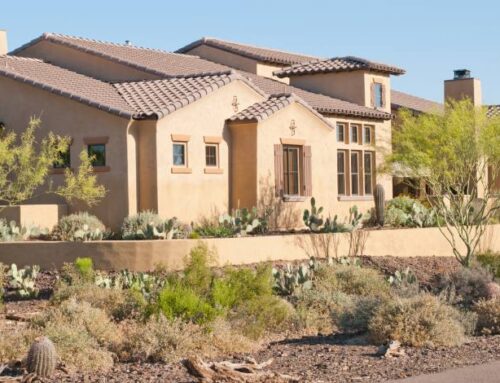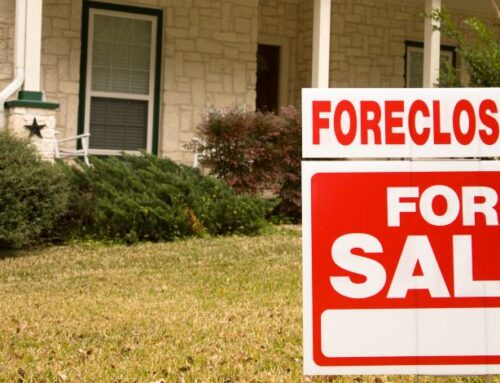Updated 6/2024
Arizona is a beautiful state known for its stunning landscapes, warm climate, and vibrant culture. Known as the Grand Canyon State, Arizona is a popular destination for tourists and outdoor enthusiasts, but people aren’t just coming to take in the sites. Arizona is also a popular destination for those looking for a new place to call home.
As with any life change, it’s important to have the complete picture before you make any plans. Those contemplating a move need to know about more than sunny days and mild winters, starting with what it costs to live in Arizona. While the question is simple, the answer depends on a great number of factors.
The average cost of living in Arizona can vary significantly depending on where you live and your lifestyle. For example, retirees will have different costs to weigh than those with children. This article will explore the cost of various aspects of life in the sun-filled state, from housing and transportation to food and taxes.
Keep reading to learn how far your dollar will stretch in Arizona.
What Is the Cost of Living in Arizona?
The cost of living is usually people’s top concern when considering a big move. As with any state, Arizona’s average cost of living fluctuates based on many factors, including lifestyle preferences and whether you live in an urban or rural area. The good news is that Arizona has a variety of locations that provide a mix of opportunity and affordability.
The Cost Of Living in Arizona’s Largest Cities
Arizona offers a unique blend of urban and rural areas. With bustling metropolitan cities and quaint small towns, Arizona has something that appeals to various lifestyles and preferences. Each of these areas has its distinct vibe and offers different attractions, entertainment, and transportation options.
Let’s look at the cost of living within several popular large Arizona cities and the average costs state-wide in key areas like transportation, taxes, and food.
The cost of living in Phoenix, Arizona
The city of Phoenix had a population of 1.644 million as of 2022 and is the ninth fastest-growing city in the United States. The greater Phoenix area boasted a population of 4.95 million in 2022. With clear blue skies and sun-filled days, it’s easy to see why it is such a popular destination. But what about the costs associated with living in the sun-soaked Valley?
The median cost to buy a home in Phoenix is around $498,999, which is higher than the national median. The median rent for all property types comes in at $1,360 per month and is decreasing.
The cost of living in Tucson, Arizona
Surrounded by magnificent mountains, Tucson is the second largest city in Arizona. With a population of 546,574 as of 2022, Tucson is a thriving city full of entertainment, art, culture, and business. What can you expect regarding the cost of living if you want to hang your hat in the city fondly referred to as Old Pueblo? The average cost to buy a home in Tucson is $333,864 as of May 2024.
The median rent, regardless of property type, currently comes in at $1,650 per month. While housing costs are higher than the national average, they are trending downward.
The cost of living in Prescott and Sedona
Prescott, Arizona, is not a large city, with just over 47,600 people calling it home in 2024. Sedona, Arizona, is even smaller with a population of under 10,000. While it is easy to think that smaller towns always have a lower cost of living, that is not always the case. Both of these areas have a significantly higher cost of living due to several factors, including their appeal as tourist destinations.
Sedona, for example, is considered a tourist destination and attracts outdoor lovers and spiritual seekers from around the nation. It is also cooler in the summer than other areas of the state and has more than its fair share of picturesque mountains. The average cost of a home in Sedona is upwards of $950,000, and the cost of living there is 28% higher than the national average.
Prescott is a historic town with “Old West” roots, with historical sites from Arizona’s earliest days. The weather is dramatically different from the larger cities to the south, so much so that the yearly snow Prescott receives has earned it the nickname “Arizona’s Christmas City.” An average home costs around $814,000, The cost to live in this idyllic town is 16% higher than the national average.
The cost of living in Flagstaff and Northern Arizona
Flagstaff and Northern Arizona are known for mountains, high desert, and ponderosa pine forests. The state’s tallest mountain, Humphreys Peak, is nearby, as is the Arizona Snowbowl ski resort. Also in Northern Arizona are tourist attractions including Oak Creek Canyon, the historic Route 66, and the majestic Grand Canyon National Park.
Flagstaff is home to Northern Arizona University and 76,831 residents. The average home in Flagstaff goes for $663,347 in 2024, up 7.5% year over year. Rent in Flagstaff is just under $2,000 a month.
Transportation Costs in Arizona
The state of Arizona has a unique blend of urban areas and small towns, with more than a few ghost towns in the mix as well. Transportation between these locations requires a car, with options like light rail, street cars, and shuttles being available within larger localities.
In Phoenix, transportation expenses like bus fares and gas prices are 7% higher than the national average. In Tucson, similar transportation expenses are 4% higher. Transportation also costs between 10% to 18% higher in Prescott, Sedona and Flagstaff.
Personal vehicles are the most popular way to get around town and see the state’s sites. Before you hit the road, you can expect to pay an average of $3.64 per gallon when filling up. While the cost of gas fluctuates significantly, this is higher than the national average of $3.44 per gallon.
Local, State, Property Taxes and Fees in Arizona
No conversation about the cost of living would be complete without talking about taxes. Arizona has relatively low property taxes, which average 0.51% of the assessed home value, lower than the national average. Since state property taxes are based on the county where the property is located, some areas have higher assessed values and taxes.
Income taxes have recently undergone significant changes in Arizona. The first change collapsed the multi-tiered state income tax brackets into just two, which apply to 2022 income. In 2023 a flat tax of 2.5% kicked in, effectively lowering taxes for most residents.
Arizona has a 5.6% sales tax, but there are some exceptions. For instance, prescription medicine is not taxed, and some cities do not tax foods (Phoenix, Tucson, and Mesa) while other cities do. This further illustrates the importance of taking a closer look at the specific area you’re interested in relocating to so you can better understand the cost of living.
Arizona Food Costs
Food costs are up across the nation, with the average annual food prices 5% higher in 2023 than in 2022, according to the United States Department of Agriculture (USDA). And while food costs change by location, even in Arizona’s largest city of Phoenix, food costs were just 11% higher over the previous year, while the national average was 12.6%.
Your grocery bill may be higher than expected in some areas of Arizona. For instance, Tucson’s food costs are 8% higher than the national average. The highest food costs come from Flagstaff and Sedona, which are 10% higher than the national average.
Other Expenses To Consider In Arizona
There are many considerations to consider when determining the affordability of any move. Here are a few additional costs you may be curious about:
- Home insurance will cost you around $2,163, slightly lower than the national average of $2,511. This varies based on the property value and other factors.
- Auto insurance is climbing nationwide, but Arizona drivers currently pay about $2,008, the same as the national average. Your age, car, driving record, and other factors play into this expense.
- Childcare costs account for around 20% of an Arizona household’s income in 2023, with costs rising nationwide.
- Vehicle registration fees are nominal, but an annual Vehicle License Tax is 60% of the manufacturer’s base retail price, reduced by 16.25% yearly starting from the first year it was registered in the state.
Learn More About The Arizona Home Buying Process
Arizona is a diverse and beautiful state full of history, interesting sites to see, and fun things to do. If you want to make the Grand Canyon State your home, start by determining which area you want to live in. This will let you hone in on the average costs for fundamentals like housing, transportation, and groceries. From there, you can create a more comprehensive view of how far your dollar will go and how much house you can afford.
But remember, costs are important, but they are only part of the picture. Arizona is a fantastic place to call home, which is why it is consistently growing. So when you’re ready to explore buying a house in Arizona, we’ll be here to help.
If you’re interested in learning more about the intricacies of the Arizona homebuying process, check out a few of our recent articles:
- Mortgage Broker vs. Credit Union: Which One Should You Choose?: The decision between a credit union and a mortgage broker depends on your financial situation and preference.
- How Much is Mortgage Insurance in Arizona?: Depending on your home loan type and the size of your down payment, you may be required to purchase mortgage insurance, which will increase your monthly expenses.
- How to Negotiate Home Price as a Buyer: A home negotiation can be one of the most important near-final steps to getting the home of your dreams. Learn how to negotiate a house price as a buyer to increase the likelihood of purchasing the home you want.
If you have any questions, contact us online or call (866) 264-6421.




